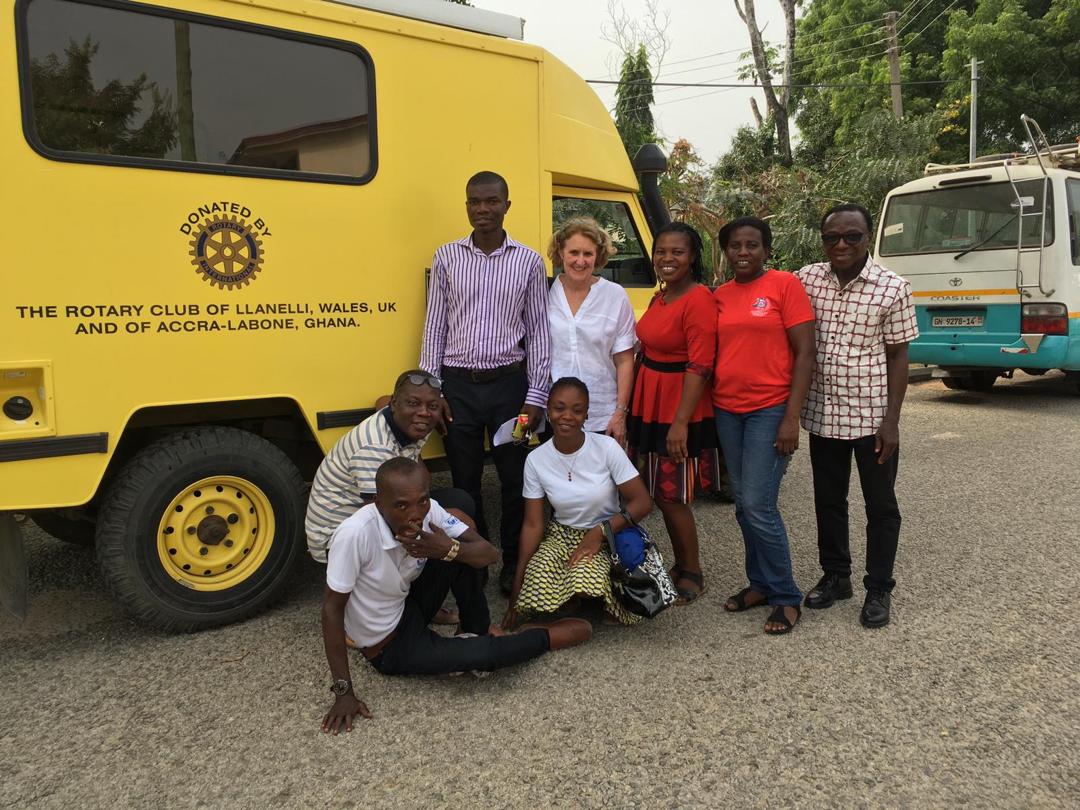Language, communication, and inclusion: Notes from Ghana

by Ruth Swanwick and Dani Fobi
Our British Academy funded research project, that examines early years support for deaf children and their caregivers in Ghana, had just taken off when the spread of Covid-19 hit its first peak in March 2020. We are an international UK-Ghana team, and after some preliminary field work in Ghana in February we had data collection and capacity building plans set to go. The pandemic stopped our work in schools, clinics, and with families in its tracks and compelled us to develop new connectivity and remote ways of working together that continue to challenge our north-south communications, teambuilding, and methodologies.
Our research is all about inclusion, and what it takes to build inclusive societies for deaf children and their families. The disruption to this work, and the social nature of that disruption forced us, like many other academics, to reflect on ways in which this crisis exposes and deepens issues of societal exclusion for deaf adults, children, and their families.
Whilst unable to carry out much of our field work during the spring 2020 lockdown we spent some time talking with members of the deaf community in Ghana about their experiences of Covid-19. We interviewed teachers of the deaf, leaders of deaf advocacy groups, and students through WhatsApp chat and video calls and asked them to reflect on the impact of the pandemic on the deaf community in Ghana (Swanwick et al 2020). Their responses revealed the extent to which access to language and communication in a crisis situation can decisively impact on deaf people’s experience of inclusion and exclusion at a number of levels.
The participants described the impact of the pandemic on everyday meaning making and social interaction characterised by the constrained opportunities for quotidian encounters with others, who share a linguistic and cultural connection. The disruption to day-to-day interaction among deaf people closed opportunities for the transmission of information, experience, understanding, and kinship. Adults were not been able to congregate in ‘deaf spaces’ (Murray et al 2020), children were disconnected from peer socialisation in schools, and families of deaf children were marooned from trusted professional advice and support, and stigma-free interactions about their child.
Whilst being cut off from family, friends, and social and work communities has been a shared human experience, the information about the pandemic (what it means, how we should behave, and how we can be safe) has been accessible, and indeed all engulfing for most hearing people (Adami et al 2020). The deaf adults that we spoke to said that this information has not been fully accessible, either through social serendipity, written/visual material, or the provision of sign language interpreters.
The first press conference given by the president of Ghana on the pandemic was broadcast without a sign language interpreter. It was in this broadcast that the first lockdowns in the country were instituted. Many deaf people missed this vital information and were consequently apprehended by the police for not complying with the law. Even when interpreting for television broadcasts was provided, this was usually a small insert at the bottom of the television screen, often visually inaccessible and obscured by news headlines. The interpreting provided was frequently non complaint with the code of practice in terms of visual presentation, and quality. These inequities, experienced all over the world, were picked up by the international deaf community, and friends of deaf communities (Napier and Leeson, 2016), who advocated collaboratively to ‘bring back the interpreter’. This caught the media’s attention and changed global practice.
Our respondents also talked about the urban and rural divide in terms of energy and internet connectivity. In urban communities, deaf participants were able to access information from the government and the Ghana National Association of the Deaf via the television, their smartphones, and other technological devices. This information could not be properly shared with colleagues in rural areas where access to electricity, internet and smart devices was not a given. In these contexts, deaf children and their families were cut off from communication regarding the pandemic and the implications for people’s lives.
Through these discussions we witnessed the deepening of pre-existing social inequalities caused by the Covid-19 pandemic, that has been a critical test of global commitment to inclusivity. Through the experiences of our respondents we saw inclusivity fail at an institutional level although re-claimed through deaf community and advocacy collaboration, collective and coordinated efforts around children and the families, and a sense of shared identity. This will influence how we progress with our questions and our methods, and how we contemplate the impact of our work on the societal inclusion of deaf children and their families in this context.
References
Adami, E., Al Zidjaly, N., Canale, G., Djonov, E., Ghiasian, M., Gualberto, C. & Pirini, J. (2020),
PanMeMic Manifesto: Making Meaning in the Covid-19 Pandemic and the Future of Social
Interaction, Working Papers in Urban Language and Literacies, 273 (London, King’s College)
Murray, J. J., Snoddon, K., De Meulder, M. & Underwood, K. (2020), ‘Intersectional Inclusion for Deaf Learners: Moving beyond General Comment No. 4 on Article 24 of the United Nations Convention on the Rights of Persons with Disabilities’, International Journal of Inclusive Education, 24(7): 691–705.
Napier, J. & Leeson, L. (2016). Sign language in action (Research and Practice in Applied Linguistics). London, Palgrave Macmillan
Swanwick, R., Oppong, A., Offei, Y., Fobi, D., Appau, O., Fobi, J., and Frempomaa, F. (2020)
The impact of the COVID-19 pandemic on deaf adults, children and their families in Ghana.
Journal of the British Academy, 8, 141–165. (https://www.thebritishacademy.ac.uk/publishing/journal-british-academy/8/impact-covid-19-pandemic-deaf-adults-children-and-their-families-ghana/)
